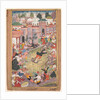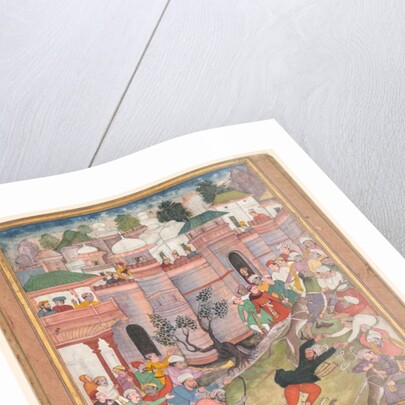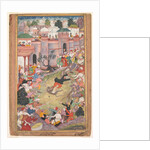Sizing information
| Overall size (inc frame) | 20 x 30cm (7.9 x 11.8in) |
| Depth | 0cm (0in) |
| Artwork | 17.2 x 25.2cm (6.8 x 9.9in) |
| Border (mount) |
2.4cm
top/bottom
(0.9in)
1.4cm left/right (0.6in) |
| The paper size of our wall art shipped from the US is sized to the nearest inch. | |

Our prints
We use a 200gsm fine art paper and premium branded inks to create the perfect reproduction.
Our expertise and use of high-quality materials means that our print colours are independently verified to last between 100 and 200 years.
Read more about our fine art prints.
Manufactured in the UK, the US and the EU
All products are created to order in our print factories around the globe, and we are the trusted printing partner of many high profile and respected art galleries and museums.
We are proud to have produced over 1 million prints for hundreds of thousands of customers.
Delivery & returns
We print everything to order so delivery times may vary but all unframed prints are despatched within 1–3 days.
Delivery to the UK, EU & US is free when you spend £75. Otherwise, delivery to the UK costs £5 for an unframed print of any size.
We will happily replace your order if everything isn’t 100% perfect.
Product images of The game of wolf-running in Tabriz, from an Akbar-nama, c. 1595-1600


Product details The game of wolf-running in Tabriz, from an Akbar-nama, c. 1595-1600
The game of wolf-running in Tabriz, from an Akbar-nama, c. 1595-1600
The game of wolf-running in Tabriz, from an Akbar-nama (Book of Akbar), c. 1595-1600. After four years of traveling in exile, fleeing Afghan forces, Humayun reached Tabriz, the glittering capital of the Safavid dynasty in northwestern Iran, here imaginatively rendered by the Indian artist. There the second Mughal emperor enjoyed warm hospitality extended by the shah of Iran, who called for a game of wolf-running for which the city was famous. Artists painting during the time of Akbar, late in his reign when historical subjects dominated, speculated as to how the game was played, based on eyewitness accounts. They gave the figures lively emotive expressions and gestures, and the dense crowding successfully conveys the pandemonium of the scene.
- Image ref: 2744156
- Heritage Art/Heritage Images
Find related images
 zoom
zoom























